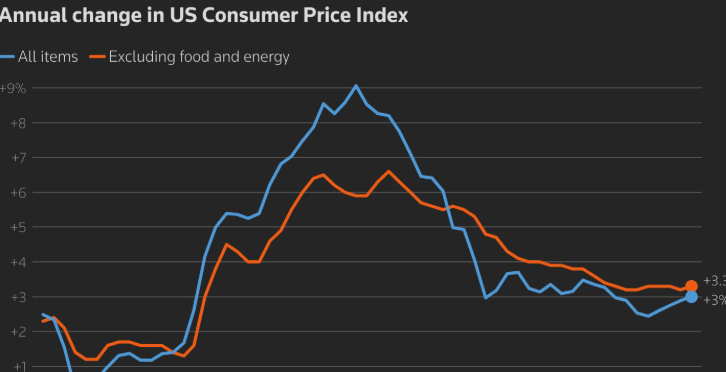# $AUD #Inflation #Economy #Australia #CentralBank #Finance #Investing #MarketTrends #ConsumerPrices #InterestRates #CostOfLiving
Why Is Australia’s Inflation Hitting a Year-High at 3.2%? What It Means for Your Wallet!
Australia’s news recently highlighted a concerning economic trend as inflation surged to 3.2%, surpassing the Reserve Bank of Australia’s (RBA) target range for the first time since the second quarter of 2024. This uptick raises critical questions about the economic landscape and its implications for everyday consumers.
As inflation rises, the cost of living increases, affecting purchasing power and household budgets. Australians now face higher prices for essential goods and services, including food, housing, and transportation. The RBA’s target inflation band of 2%-3% is viewed as a benchmark for economic stability. Surpassing this threshold signals potential monetary policy adjustments, which could lead to interest rate hikes aimed at controlling inflation.
What Factors Are Driving Inflation?
Several factors contribute to this inflationary pressure. Firstly, supply chain disruptions continue to affect the availability of goods. Global events have led to delays and increased costs in shipping, which ultimately trickle down to consumers. Additionally, labor shortages in key industries have driven wages up, further contributing to rising costs.
Furthermore, increased consumer demand post-pandemic has compounded these issues. As lockdowns ease, Australians are eager to spend, leading to heightened demand for goods and services. This demand, coupled with constrained supply, creates an environment where prices naturally escalate.
Implications for Monetary Policy and Your Wallet
The RBA may respond to these inflationary pressures by tightening monetary policy. Interest rates could rise as the central bank attempts to stabilize the economy and curb spending. For consumers, this means higher mortgage rates and increased costs for loans, impacting financial planning and budgets.
Investors should also take note of how the stock market reacts to these developments. Sectors sensitive to interest rates, such as real estate and consumer discretionary, may experience volatility. It’s crucial to stay informed about these trends as they can affect investment strategies.
What Can You Do?
In times of rising inflation, consider adjusting your financial strategy. Look for opportunities in sectors that historically perform well during inflationary periods, such as commodities or inflation-protected securities. Additionally, diversifying investments can help mitigate risks associated with market fluctuations.
For those interested in the stock market, keeping an eye on stock market updates can provide insights into potential investment opportunities. Understanding how inflation impacts different sectors can guide your investment decisions and help you navigate these economic changes.
In conclusion, Australia’s inflation hitting a year-high at 3.2% raises significant concerns for consumers and investors alike. With a potential shift in monetary policy on the horizon, staying informed and adjusting financial strategies is essential for weathering this economic storm. For more insights into the evolving financial landscape, explore related cryptocurrency topics.
As the economic situation develops, being proactive and adaptive will be key to maintaining financial health in an inflationary environment.











Comments are closed.